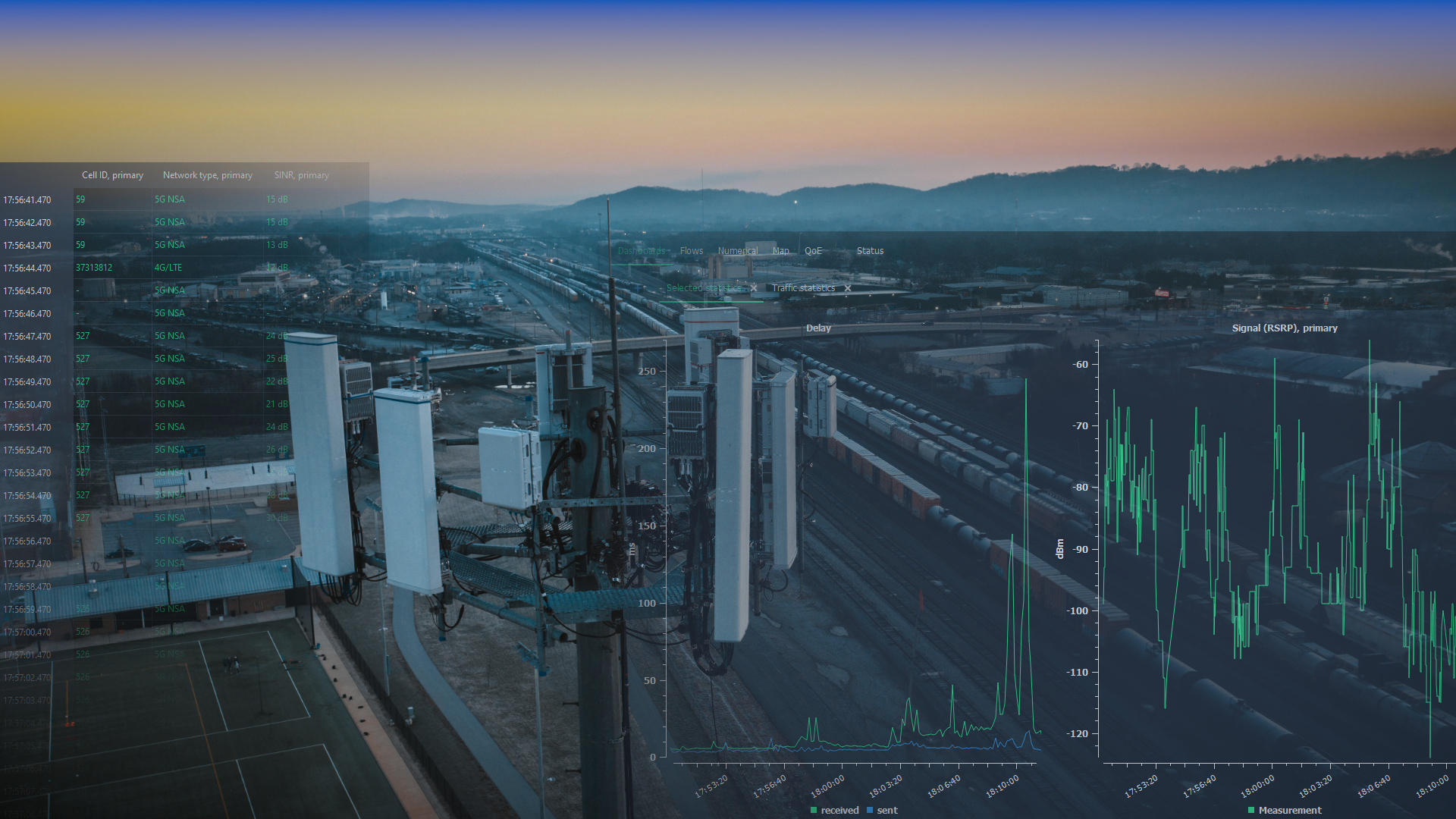
Qosium now also supports collecting signal and connection statistics from a physical layer, enabling a more comprehensive measurement and monitoring in wireless networks. The radio interface statistics help you solve connection quality problems quickly, cutting costs.
April 7th, 2022
Qosium’s passive QoS measurement and monitoring solution is independent of the network access technology. Increasingly, measurement paths also include wireless connections such as WiFi, LTE, or 5G. There, radio connectivity plays an essential part in the network quality and performance experienced by applications and end-users. Qosium’s new features help you analyze the network performance in more detail by knowing the physical layer conditions, in addition to QoS.
The radio interface statistics have been supported by Qosium for a while already. However, they are now an integral part of the Qosium statistics. We continuously extend the support for new radio technologies, modules, platforms, and operating systems. Qosium Probe can be installed on many 4G and 5G mobile routers, especially those developed for industry usage.
Qosium’s purpose is not to be a radio network analyzer with plenty of excellent special tools available on the market. Instead, the goal is to provide more information on the connection quality to find the causes of connection quality problems with less effort. For example, when Qosium detects QoS issues, you can quickly check whether they are due to a weak signal level (RSSI, RSRP) or the quality of the signal (RSRQ, SINR). In case the results indicate a bad signal, with the help of geographical location and cell/access point information, you have sufficient knowledge to focus the recovering actions and further analysis work.
It’s worth noticing that the signal condition does not always explain communications quality problems. The signal strength can be strong, but QoS results indicate issues, e.g., high delays or connection breaks. More importantly, it is to know if the problem is because of the radio interface issues or not.
The use cases include, for example, continuous monitoring of private industrial networks where all connectivity problems directly impact efficiency and safety. There, the time spent detecting and finding the root cause of problems and the extent of the disruption is critical. In some use cases, the Qosium’s physical layer performance statistics alone provide interesting and sufficient data. When accompanied by passive QoS monitoring, it makes it possible to measure and verify wireless networks continuously during regular activity. Carrying out monitoring this way reduces the need for extensive and costly measurement campaigns. A detailed analysis with special tools on radio access networks can then be directed to situations and areas where they are the most helpful.
